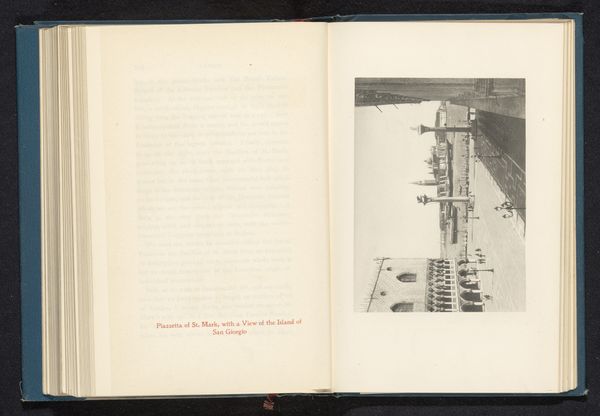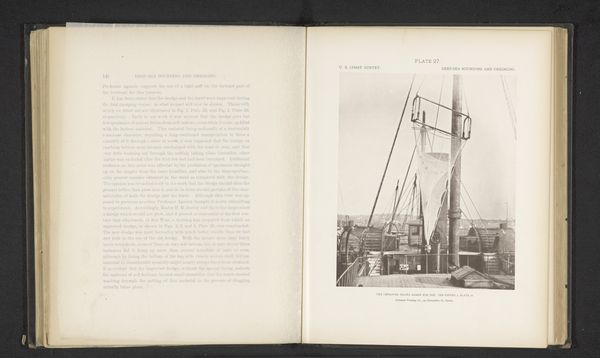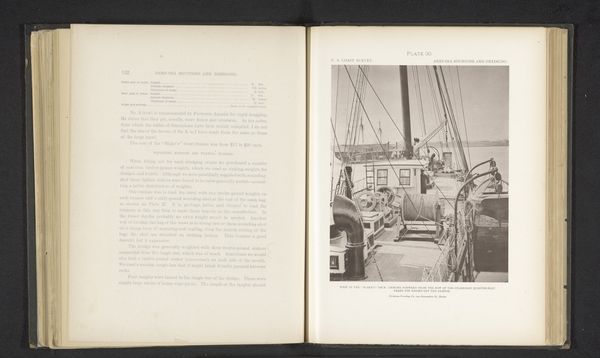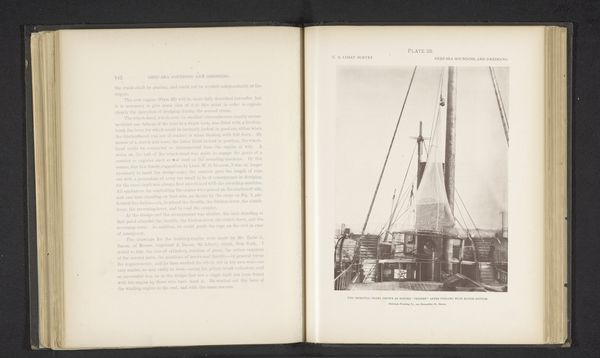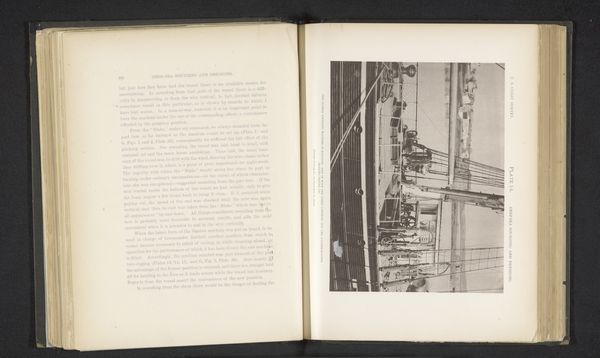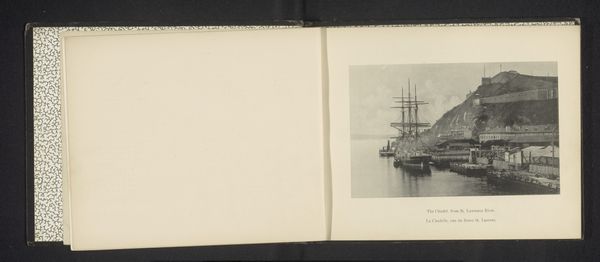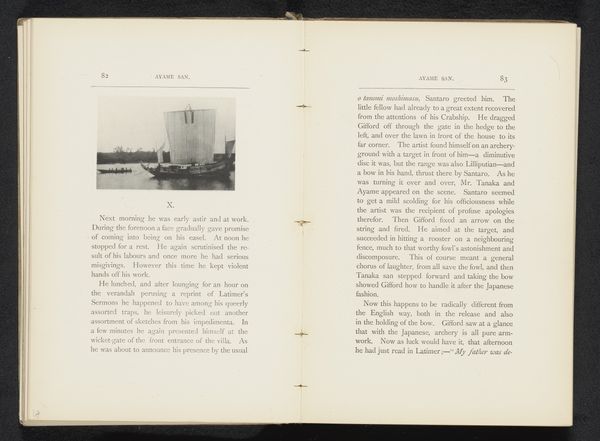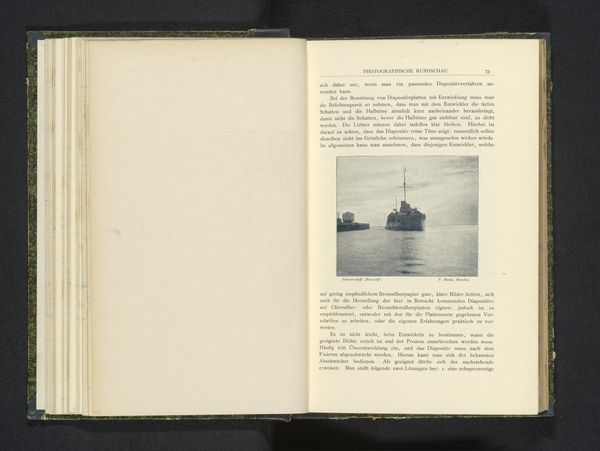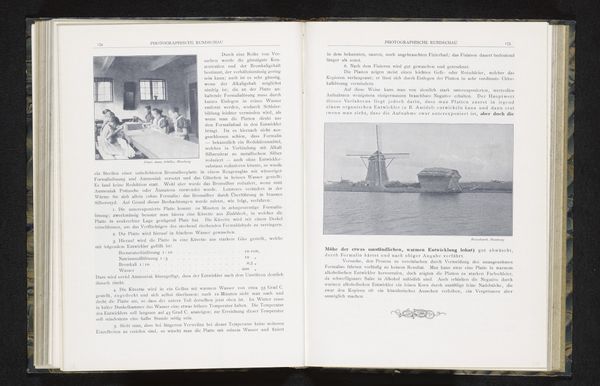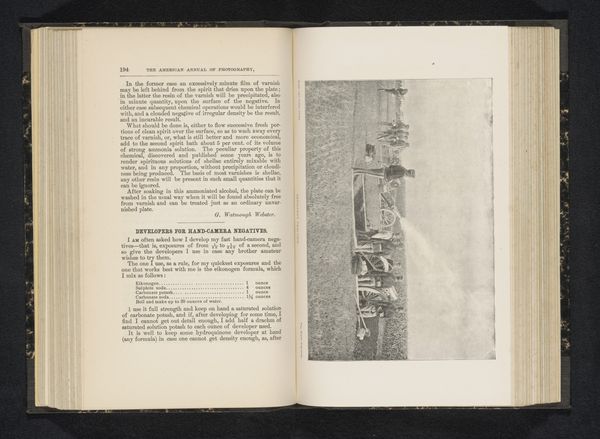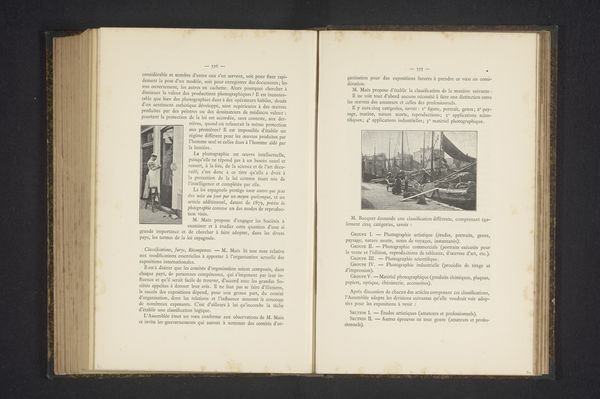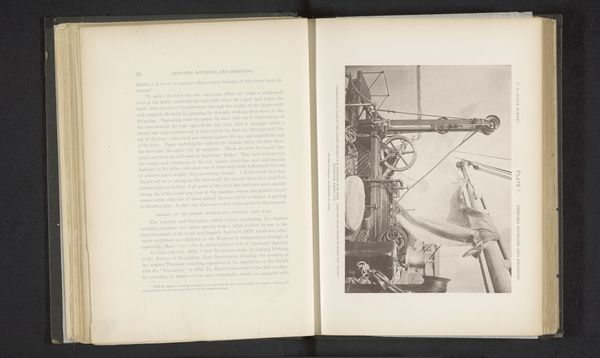
print, photography, gelatin-silver-print
#
paper non-digital material
# print
#
landscape
#
photography
#
geometric
#
gelatin-silver-print
#
academic-art
Dimensions: height 165 mm, width 215 mm
Copyright: Rijks Museum: Open Domain
Editor: Here we have an early gelatin silver print titled “Gezicht op de Sigsbee-sondeermachine aan de George S. Blake," made before 1880. The photo is part of a book. It depicts a rather complex mechanical apparatus with men operating it, maybe at sea? What stands out is how this image frames technological progress, perhaps with a sense of grand ambition? How do you interpret this work? Curator: It's fascinating to consider this image within the context of its time. The late 19th century was marked by intense industrial and technological advancements, but also growing concerns about their societal impacts. How does the representation of the "Sigsbee sounding machine"—a device to map the ocean floor—reflect the complex relationship between technological innovation and the exploitation of natural resources? What hidden power structures and colonial ambitions are implied? Editor: That’s a good question. I see technological advancement, but also maybe it speaks to humanity's quest for knowledge and dominion over the natural world? Curator: Precisely. And who is allowed to pursue this knowledge and at what cost? The gendered and racial dimensions of these scientific explorations often went unacknowledged. We can’t look at scientific advancements neutrally. How did these new technologies affect existing class structures or reinforce social inequalities? Think about who controls this new technology. Who benefits from its applications? Editor: I see your point. So, while the photograph celebrates the ingenuity of this machine, we must remember to question the power dynamics embedded in such imagery. Curator: Absolutely. Engaging critically with visual culture means acknowledging that images aren't neutral representations but carriers of ideologies, reflecting particular perspectives shaped by power and privilege. Editor: This conversation changed how I perceived this picture. Looking through the lens of gender and power has illuminated previously unseen depths. Curator: Indeed, that's why context matters. It’s essential to bring a questioning, critical perspective to art and history, looking beyond the surface to uncover deeper, often troubling, realities.
Comments
No comments
Be the first to comment and join the conversation on the ultimate creative platform.
